Ultra-early ripening cabbage hybrid Nozomi f1
Nozomi F1 is one of the popular hybrids of early ripening white cabbage. Gardeners choose it because of its good yield, unpretentiousness, pleasant taste and resistance to diseases. We will talk in detail about the advantages and disadvantages of this cabbage and consider the nuances of cultivation.
Description of Nozomi cabbage f1
This hybrid is consumed fresh, stewed or added to first courses. Nozomi F1 is suitable for growing commercially, but is not suitable for canning or long-term storage.
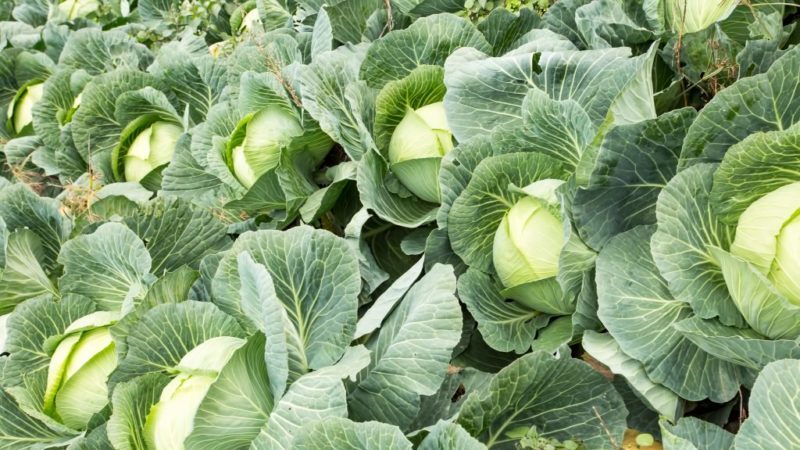
Origin and development
The Nozomi F1 hybrid was developed by scientists from the Japanese company Sakata Vegetables Europe in France. It was there that in 1998 the Sakata company opened a breeding station, and in 2003 it moved its main European representative office there.
The seeds of this company are produced in France and other European countries.
Reference. The Nozomi hybrid was added to the State Register of the Russian Federation in 2007.
Chemical composition and beneficial properties
100 g cabbage contained:
- carbohydrates – 5.8 mg;
- proteins – 1.28 mg;
- fats – 0.1 mg;
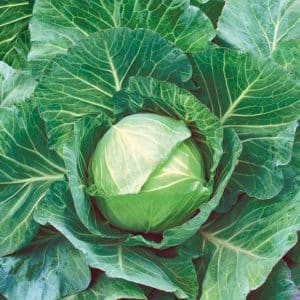
- potassium – 170 mg;
- calcium – 40 mg;
- phosphorus – 26 mg;
- sodium – 18 mg;
- magnesium – 12 mg;
- iron – 0.47 mg;
- zinc – 0.18 mg;
- vitamin C – 36.6 mg;
- PP – 0.234 mg;
- E – 0.15 mg;
- B6 – 0.124 mg;
- K – 0.076 mg;
- B1 – 0.061 mg;
- A – 0.03 mg.
Eating cabbage helps prevent the development of atherosclerosis and improve the functioning of the gastrointestinal tract, and helps treat stomach and duodenal ulcers. Cabbage juice has antitussive and expectorant properties, useful for heart and kidney diseases.
Cabbage helps with insomnia, headaches and diseases of the spleen, increases appetite, enhances the secretory activity of the gastric glands, and has diuretic and mild laxative properties.
Features of application
Nozomi F1 is suitable for fresh consumption, it is stewed and used for preparing first courses.
Important! IN pickled and salted cabbage quickly spoils.
Ripening time and yield
This is an early ripening hybrid. The harvest is ready for harvest 50-60 days after planting the seedlings in the ground.
Marketable yield is 309-320 c/ha.
Resistance to disease and cold
The hybrid is resistant to Alternaria and bacterial rot, but as a result of poor care, the crop is affected by clubroot, blackleg or downy mildew.
Seedlings tolerate temperature drops down to -5...-7°C.
Description of appearance and taste
The hybrid forms dense heads of round or flat-round shape, the average weight of which reaches 1.3-2.5 kg.
The covering leaves are small, gray-green in color, bubbly, with slightly wavy edges, covered with a waxy coating, the intensity of which varies from weak to medium. When cut, the heads of cabbage are yellowish-white. The outer stalk is very short, the inner stalk is short or medium length.
Nozomi F1 tastes sweet, tender and juicy.
Growing regions
The hybrid is included in the State Register of the Russian Federation with access to growing in the North Caucasus and Central Black Earth regions. Thanks to its unpretentiousness, it is successfully cultivated in other areas, using film cover if necessary.
Advantages and disadvantages of the Nozomi F1 hybrid
Main advantages:
- early and friendly maturation;
- high productivity;
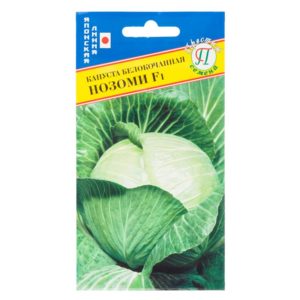
- excellent commercial quality;
- good transportability;
- resistance to cracking and short-term frosts;
- unpretentiousness to growing conditions;
- immunity to major diseases;
- good taste.
Minuses:
- short term storage;
- non-universal use;
- impossibility of independently obtaining seeds.
Difference from other varieties and hybrids
A comparison of Nozomi F1 with other early ripening hybrids is presented in the table:
| Hybrid | Head shape | Head weight, kg | Productivity, c/ha |
|---|---|---|---|
| Nozomi F1 | Round or flat-round | 1,3-2,5 | 309-320 |
| Angelina | Round | 1,0-1,2 | 445-512 |
| Aurora | Round | 0,9-1,8 | 301-420 |
| Admiral | Oval | 0,8-1,8 | 291-473 |
Features of planting and growing
In order for the experience of growing a hybrid to be positive, it is important to know some of the nuances of preparing planting material, soil and choosing a site.
Soil requirements and predecessors
Nozomi F1 grows well in light, loose, fertile soil with good aeration, moisture permeability and a neutral acidity level. The best option is loam.
It is better to plant cabbage after legumes and grains, cucumbers, onions, and pumpkins.
Site preparation
The land on the site has been prepared since the fall. They dig it deeply and add humus, manure or compost. In spring, the soil is fertilized with preparations containing phosphorus and potassium.
Reference. If the soil is not loose enough, coarse sand is added to it. Lime is added for deoxidation.
Seed preparation
Sowing seeds for seedlings is carried out in late February - early March. For disinfection, planting material is pre-soaked in a solution of potassium permanganate and hardened. Also, the seeds are germinated in advance, laid out on a damp cloth and left for several days at a temperature of +20...+30°C.
A substrate suitable for growing seedlings consists of equal parts of humus and turf soil, to which are added 15 g of superphosphate and ammonium nitrate and 6 g of potassium chloride (for every 10 kg of soil mixture).
Pre-prepared seeds are placed on the surface of the substrate, buried 1.5 cm, sprinkled with earth, slightly moistened with a spray bottle, covered with polyethylene to create a greenhouse effect and put in a warm, well-lit place.
Growing seedlings
5-7 days after sowing the seeds, shoots appear. After this, remove the film from the container with seedlings.
When 1 pair of leaves is formed on the seedlings, the seedlings are placed in a room with an air temperature of +13...+15°C and picked.
15 days before transplanting into open ground, seedlings begin to be hardened by taking them outside or onto a balcony and gradually increasing the time they stay there.
Non-seedling planting
This hybrid is grown only by seedlings. However, in the southern regions, it is permissible to sow seeds in a greenhouse, and not in separate containers at home.
To do this, dig up the soil in the greenhouse in the fall, clear it of plant debris, and add humus or compost. At the beginning of March, planting furrows are made in it, into which the seeds are placed, deepening them by 1.5-2 cm. Then they are sprinkled with a layer of earth, watered and covered with polyethylene. After emergence of shoots, the film is removed.
Timing, scheme and rules for transplanting into open ground
Planting of seedlings in a permanent place is carried out from late April to mid-May, depending on the growing region. In this case, they focus on the night air temperature – consistently not lower than +10°C. By this time, the seedlings should reach a height of 15-20 cm and have 7-8 leaves.
Seedlings are planted in the early morning, evening or on a cloudy day. Planting technology: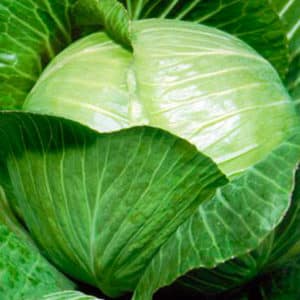
- Dig planting holes in pre-prepared beds. Their depth should be 15-20 cm, planting density – 5-6 bushes per 1 m².
- If the area is infertile and has not been fertilized in advance, add organic and mineral fertilizers (0.5 kg of humus, 3 g of ammonium nitrate, 7 g of superphosphate and 4 g of potassium salt) to the bottom of each.
- Place a sprout in the center of each hole, deepening it down to the cotyledon leaves.
- Fill the voids with soil and compact it lightly.
- Spray the seedlings with a growth stimulator (for example, Kornevin).
- Water the plantings generously.
Features of cultivation
Successful cultivation of Nozomi F1 requires the following conditions:
- the planting area should be well lit and protected from drafts;
- Cabbage should not be planted in one place for several years in a row - it releases mycotoxins, which, when accumulated, begin to impede its growth.
One of the main advantages of Nozomi F1 is its ease of care. But to obtain an abundant and high-quality harvest, it is necessary to fulfill basic agrotechnical requirements, which include regular watering, fertilizing, loosening the soil and hilling.
Watering mode
Adult plants are watered in the morning or evening 3 times a week, pouring at least 2-3 liters of water under each bush. During hot and dry periods, the frequency of watering is increased to 1 time every 2 days, and during rains it is reduced. The main thing is that the soil is moistened to a depth of 50 cm.
Water for irrigation should be settled and warm.
Reference. 10-15 days before the expected harvest, watering is stopped.
Loosening, weeding and hilling
The earth is loosened to a depth of 4-5 cm after each watering or rain. This improves the access of oxygen and moisture to plant roots and prevents the formation of a dry crust on the soil surface.
Simultaneously with loosening, weeds are removed, which takes moisture and nutrients from the soil and creates favorable conditions for infections and insects.
Reference. Mulching the ground with a 5 cm thick layer of peat eliminates the need for weeding and loosening.
Hilling is carried out in the phase of 9 true leaves. The procedure promotes the formation of new roots, which provide the cabbage with additional nutrition.
Top dressing
Cabbage is fed 2-3 times per season, applying fertilizer according to the following scheme:
- 14 days after planting the seedlings in the ground - a solution of mullein or bird droppings in a ratio of 1:7 (1 liter for each bush);
- during the setting of heads of cabbage - a solution of mullein (1:5) or chicken manure (1:10) with the addition of wood ash (2 tablespoons per 10 liters of solution);
- after 20 days - a solution of organic or mineral fertilizers (ammonium nitrate, superphosphate and potassium salt).
Fertilizers are applied simultaneously with watering.
Measures to increase yield
To increase productivity, cabbage is regularly fertilized, including using foliar fertilizers. The harvest can be harvested twice if, when cutting ripe heads of cabbage, you leave 6-8 leaves on each bush.
Disease and pest control
Nozomi F1 affects the following diseases:
| Disease | Description/symptoms | Prevention/treatment |
|---|---|---|
| Blackleg | Darkening of the root part of the stem, which over time acquires a brown tint and rots. | For prevention, the soil is disinfected before planting seedlings, the humidity level is monitored, and the greenhouse is regularly ventilated if the cabbage is growing in greenhouse conditions. |
| Kila | Plants wither, slow down in development, and bumps and growths are noticeable on the roots. | Infected plants are dug up and thrown away along with a lump of earth. The areas underneath are treated with lime. |
| Downy mildew | Small yellowish spots appear on young leaves, red-yellow spots appear on mature leaves. A light white coating forms on the underside of the leaves. Gradually they turn completely yellow and die. | Plants are treated with Bordeaux mixture. |
Among the pests that pose a danger to this hybrid are cruciferous flea beetles, white butterflies, cabbage flies and slugs. To prevent and control insects, plants are treated with ash-soap or lime solution, tincture of wormwood, tobacco and dandelion root, and biofungicides (Fitosporin, Trichodermin).
To prevent slug attacks, sprinkle the soil under the bushes with black pepper, dry mustard or crushed eggshells.
Difficulties in growing
Problems when cultivating this cabbage:
- the heads of cabbage are loose, the leaves are not juicy, but dry - lack of watering;
- plants are stunted, wither, growths appear on the roots - signs of clubroot;
- small black dots appeared on the surface of the heads of cabbage - this is probably a symptom of necrosis due to an excess of fertilizers.
Harvest and storage
Depending on the growing region, the heads of cabbage reach maturity in late May or early June.
How and when to collect
The harvest is harvested 2 months after planting the seedlings in the ground, carefully cutting off the heads of cabbage along the stem with a sharp knife.
Cabbage is stored well in the garden and does not crack, so let’s harvest it 5-8 days later than the recommended period.
Storage features and shelf life
The collected heads of cabbage are inspected for damage or pests and dried under a canopy.
Nozomi F1 store dry, cool room with good ventilation. This cabbage can be stored for no more than 2 months, so it must be sold or consumed as soon as possible.
Tips and reviews from experienced gardeners about Nozomi cabbage
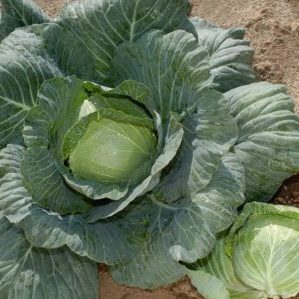
Experienced farmers recommend:
- plant dill, carrots, celery, marigolds or calendula next to cabbage - they repel insects;
- grow seedlings in outdoor greenhouses rather than at home - this way the seedlings will be stronger.
Gardeners speak positively about Nozomi F1.
Maria, Belgorod: “I have already tried to grow early cabbage several times, the experience was unsuccessful - the heads of cabbage were loose and did not set well. A neighbor offered to plant Nozomi, and I decided to take a chance. This cabbage pleasantly surprised me - with minimal care, dense, juicy heads of cabbage ripened in the beds at the beginning of summer. I also liked the taste of cabbage; it’s perfect for salads.”
Elena, Krasnodar: “What I like about Nozomi is its unpretentiousness and resistance to diseases and pests; the main care consists only of regular watering. I protect the plantings from insects with lutrasil and treat them with wood ash, the result is excellent. The yield of cabbage is high, the heads of cabbage are very juicy and sweet.”
Roman, Voronezh: “I have been growing early cabbage for a long time, including for sale. I tried different varieties, but after planting Nozomi, I settled on this one. This cabbage never fails - the yield is high, the heads of cabbage are formed dense, beautiful, do not crack, and I also really like the taste. Maintenance only includes watering and fertilizer.”
Conclusion
Nozomi F1 cabbage is grown in all regions of the Russian Federation because it is resistant to common diseases, tolerates frost well, does not have special care requirements and is suitable for growing for sale. Among the shortcomings, only a short shelf life is noted.